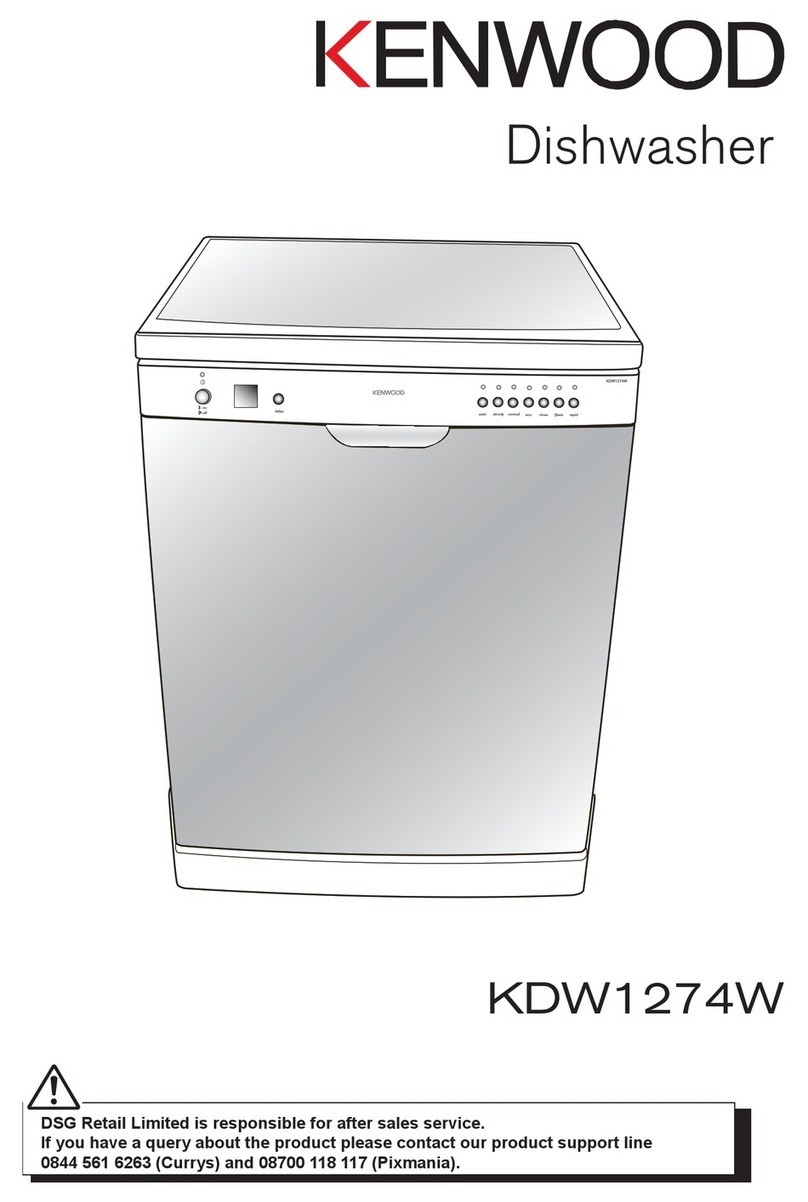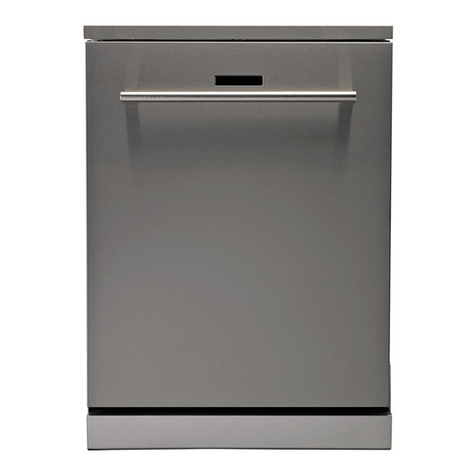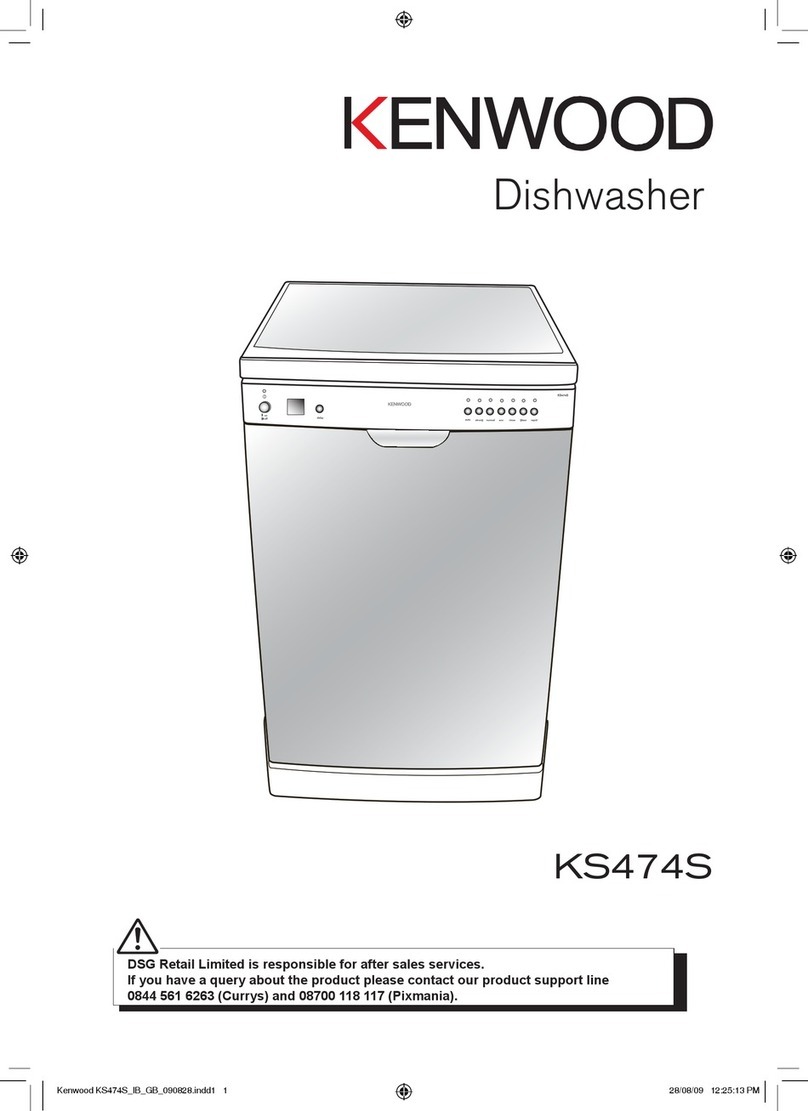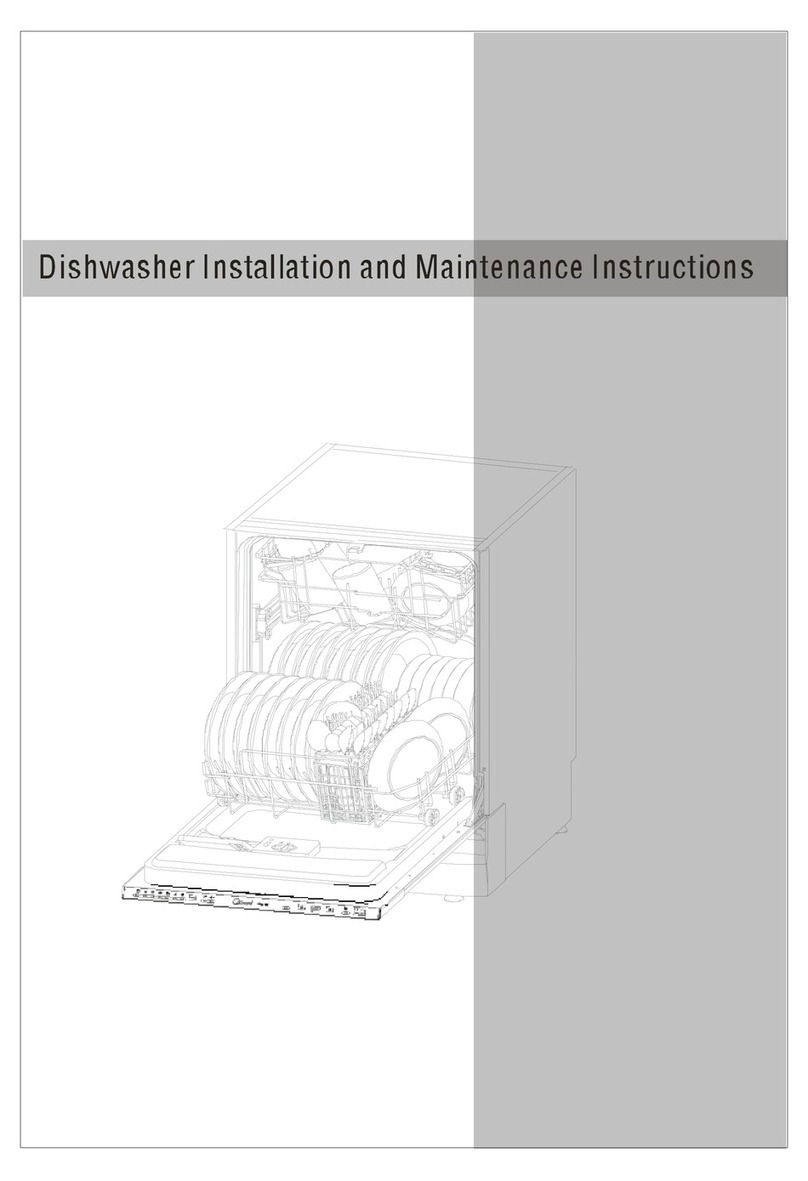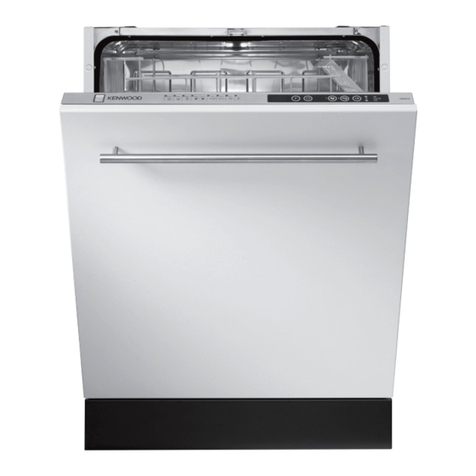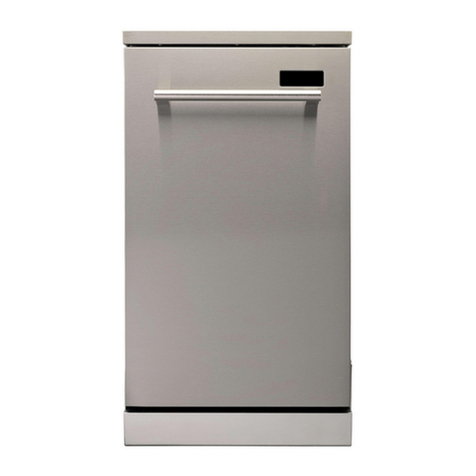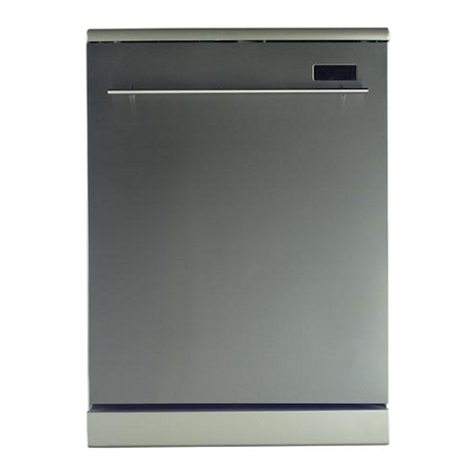1
This appliance must be earthed. In the event
of a malfunction or breakdown, earthing will
reduce the risk of electric shock by providing a
path of least resistance of electric current. This
appliance is equipped with a cord having an
conductor and a grounding plug.
The plug must be plugged into an appropriate
outlet that is installed and ed in accordance
with all local codes and ordinances.
earthing
earth
Keep children away from detergent and rinse aid, keep
children away from the open door of the dishwasher,
there could still be some detergent left inside.
Do not sit on or stand on the door or dish
rack of the dishwasher.
Do not touch the heating element during or
immediately after use.
Do not wash plastic items unless they are marked
dishwasher safe.
Use only detergent and rinse additives designed
for an automatic dishwasher. Never use soap ,
laundry detergent, or hand washing detergent
in your dishwasher. Keep these products out of
the reach of children.
During installation, the power supply must
be disconnected.
The door should not be left in the open position
since this could present a tripping hazards.
Do not tamper with controls.
Do not place any heavy objects or stand on the door
when it is open. The appliance could tip forward.
When loading items to be washed:
1) Locate sharp items so that they are not likely to
damage the door seal;
2) Load sharp knives with the handles up to reduce
the risk of injuries.
When using your dishwasher, you should prevent
plastic items from contact with heating element.
If the supply cord is damaged, it must be replaced
by the manufacturer or its service agent or a
similarly qualified person in order to avoid a
hazard.
Please dispose of packing materials properly.
Use the dishwasher only for its intended function.
Remove the door to the washing compartment when
removing an old dishwasher from service or discarding it.
The appliance is not intended for use by young
children or infirm persons without supervision.
Dishwasher detergents are strongly alkaline,they
can be extremely dangerous if swallowed.Avoid
contact with skin and eyes and keep children away
from the dishwasher when the door is open.
Check that the detergent receptable is empty after
completion of the wash cycle.
The appliance is to be connected to the water mains using
the new hose set provided. Old hose-sets should not be
re-used.
